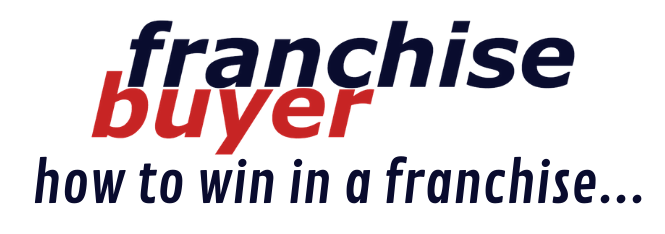
Trying to come to grips with the ever expanding world of digital strategy to grow your business?
The best way to look at it is to break it down into these four very simple steps…
In the modern world of business it’s become a pre-requisite that switched-on operators are nailing their “digital strategy”. it can be a daunting prospect, mostly because the digital For businesses that are just coming to grips with the idea landscape is expanding so rapidly and everyone has a different take on the best strategy.
There are always going to be sales people pushing the latest technologies and marketing channels, and their job is to convince you that their solution is the perfect fit, even if they’ve only just met you. After ten of those conversations it’s easy to feel overwhelmed with the number of things you MUST be doing to run your business the right way. That feeling of insurmountable complexity is completely unnecessary and most of the time it’s only there because you’ve either consulted ‘Doctor Google’, or you’re probably dealing with a dodgy service provider.

Now it’s true that all of these might represent a sizeable channel to market but every account you have needs consistent attention and sometimes it’s not what you might be expecting. As an example, when getting a Facebook profile for your business was the most exciting thing you could do to boost your visibility, it truly was a good source of organic traffic. Many businesses diverted a good chunk of their marketing budget towards building a solid Facebook following, which meant that any post from the business would find it’s way onto each follower’s feed.
Since then Facebook has created a booming business out of selling ad placements in users’ feeds and at the same time they’ve seamlessly removed posts by businesses, so now it doesn’t matter how many likes your Facebook page has, the only way you’re really going to get your content out there in a meaningful way is by buying Facebook Ads.
Another hard-learned reality of using a Facebook page is that you rarely get to control the conversation, in fact what you’re really doing is opening your business up to be more responsive to your customers’ needs. Any business would immediately agree that being excellent at customer service is a key business principle but when you’re on Facebook you really need to be ready to step up because the vast majority of consumer engagement you will attract is customer service not marketing. If you get it wrong there, it’s already on the most ‘viral’ platform the world has ever seen.
Hopefully this article will help you see why your digital strategy should be simple to develop and why you shouldn’t be worried and influenced by salespeople telling you that you’re missing the boat. The first thing to understand is that your digital strategy isn’t
just about digital marketing or eCommerce, it’s about how you use technology in its entirety to support your business.
The hierarchy of business planning typically looks like this:
Step 1: Business Strategy
This outlines the path you’re going to take to reach the goals you’ve set for yourself.
Step 2: Product Strategy
This gives consumers a way to get involved and benefit from your expertise.
Step 3: Marketing Strategy
This nurtures consumers right through their journey with your business, from first touch-point to repeat customer and ideally, advocate.
Step 4: Sales Strategy
This makes sure that consumers take the step to actually purchase your product.
These strategies don’t need to be long drawn-out things, but they need to be based on clear thinking and you need a way of measuring the success of each initiative. It’s definitely true to say that a clear business strategy leads to a clear product strategy,
which leads to a clear marketing strategy and so forth. There are of course many other strategies that you’ll develop at various points in your business, such as your content strategy and communications strategy, but the key thing to understand is that your digital strategy is developed solely to support all of these plans.
The ‘Old” Way
Fifteen years ago a typical digital strategy meant that you had a “sales” email address, a “customer support” email address and a
brochure-style website telling people what you do for a crust. These days there are literally hundreds of different things you
could do all the way through your business, but you should only really be looking to do the handful of things that best support your plans. In the case of digital marketing, you’re unlikely to be able to run more than a couple of initiatives to their full potential until you’ve really systemized them, and a half-hearted attempt always delivers poor results.
Let’s explore that simple premise by taking a look at one of the most common digital marketing strategies that businesses struggle with, Social Media.
The social media phenomenon has been around long enough for people to understand how it really works and how to get the most out of it, and that goes for consumers, businesses and the social media companies themselves. No matter who you are there is only one thing that really works on social media and that’s good content, so if you don’t have a content plan in place then this is really your first step, well before you sign-up and start tweeting.
According to eBizMBA.com the most popular social networking sites with over 100 million monthly unique users in Nov 2016 were:
- YouTube
- Google Plus
- Tumblr Instagram
For these or other reasons you might be better suited looking at alternative image-based networks such as Instagram or Pinterest, or a business focused network such as LinkedIn, but they all have their nuances and all of them need to be maintained. There are a number of social marketing tools such as HootSuite that enable you to manage more than one account at a time and they streamline the publishing of content at specific times, but just be mindful that consumers aren’t just after content, they’re looking for a response to their action. If you get a comment on one of your posts then you really need to respond otherwise there’s barely any point in posting at all.

Does Your Social Media Effort Lead to Sales?
Now for the really big question, how does your social media activity convert into sales? It’s great to be able to get someone’s attention but where do you go from there? If you’ve created a marketing strategy that uses social media as a primary source of customer acquisition then your next job is to map out their journey from the content you shared through to their point of purchase.
Along the way you’ll need to decide upon a call to action whether that’s simply to capture some details in a CRM, or to book a meeting, or to make the sale then and there. If you only get a nibble then what do you do then? You’ll need to find some way to follow up and kick-start the process.
Whatever you choose, this end-to-end user journey will be 100% specific to your business, the type of product you’re offering, the consumers you market to and the sales cycle you need to manage. Every step of that user journey needs to be designed to achieve a specific outcome and all of those steps put together are the execution of your digital strategy.
The best digital strategy is the one that lets you run your business the way you need it to run. Hopefully now you can see that your digital strategy isn’t another thing that you need to invent and it’s not something that anyone else can predetermine for you, it’s simply an execution of your existing strategies with some cool technology. If you’ve created your products, you’ve learnt how to explain them and you’ve found ways to sell them, then your digital strategy is already well on its way





